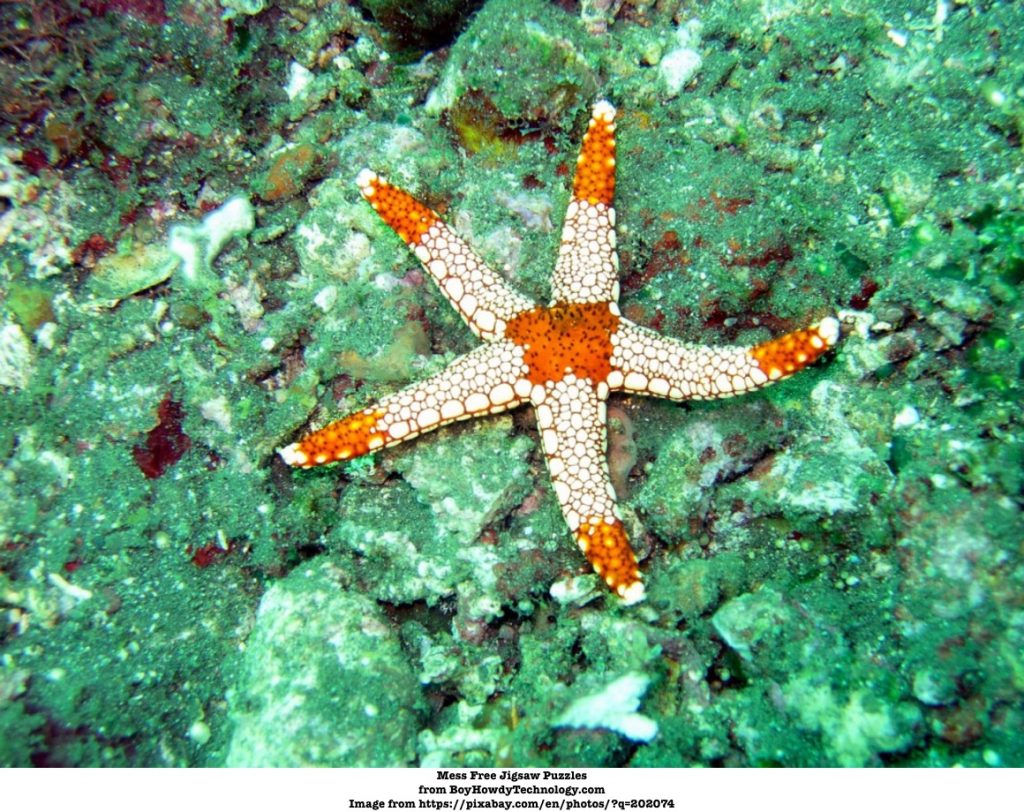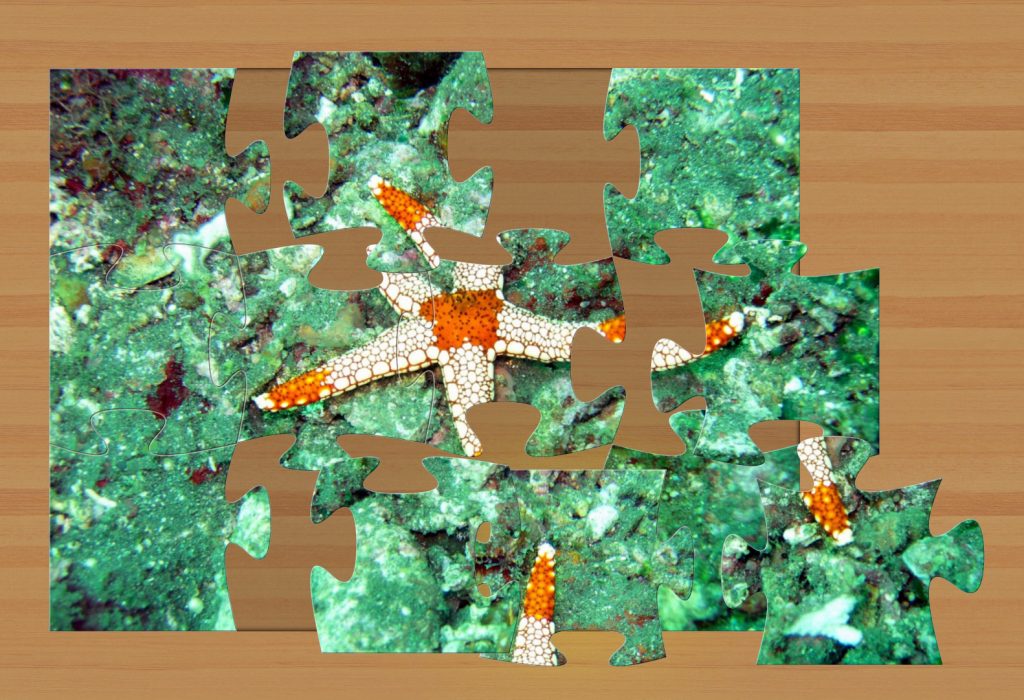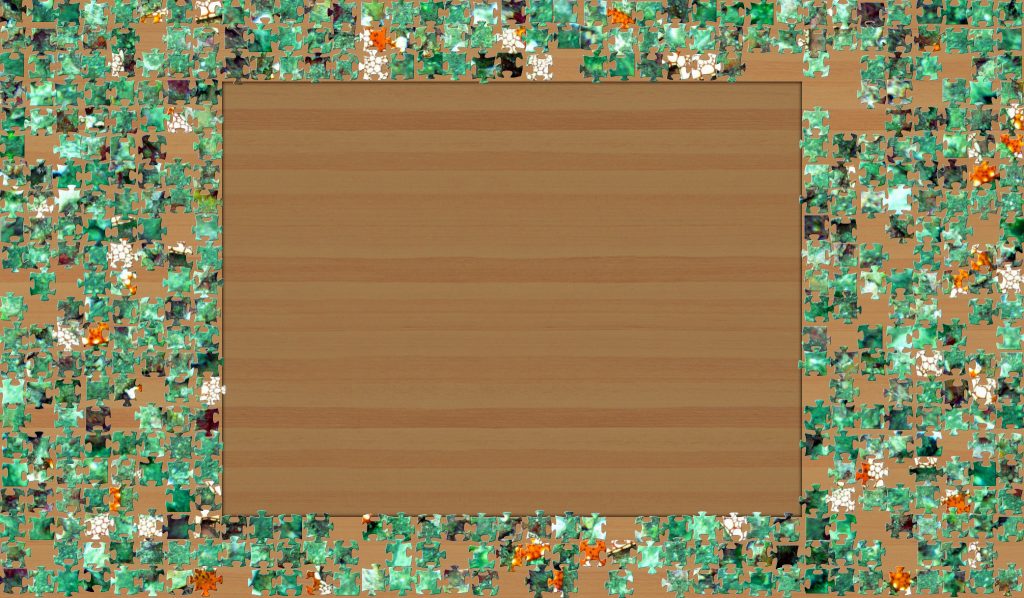
I was doing one of my digital jigsaws and noticed a strange tipping point in the process of putting the picture back together. I often choose the 100 piece option when playing on my phone, as they get far too small to see properly on the tiny screens. Detail becomes hard to see and the colours are not what you expect.

On one occasion, I chose 396 pieces and found it very difficult. However, when I tried the 100 peice on a larger screen, it proved almost as difficult as the tiny 408 pieces that I would later attempt. (See starfish image.). They were awash with colour and proved difficult for me to concentrate on one part of their surface. I found this strange, so I tried a 12 piece, and of course, this went together easily as the edges formed most of the picture.

What I found, then, was that the larger pieces with the 108 pieces, hits a threshhold that is comparatively more confusing than the tiny pieces of the 408. This is just an observation. My head said this would be easy, but the similar colours that dash the majority of this image, made the threshhold shrink to an alarmingly low piece rate.

I reckon this was all about the ‘wood for the trees.’ Looking at tiny pieces, centres your concentration to the pattern found across the whole surface, where as the larger pieces offer many areas of interest and slow down which one to concentrate on. This is not a biological answer, just an observational one that was theorised from my applied knowledge. Odd stuff!

